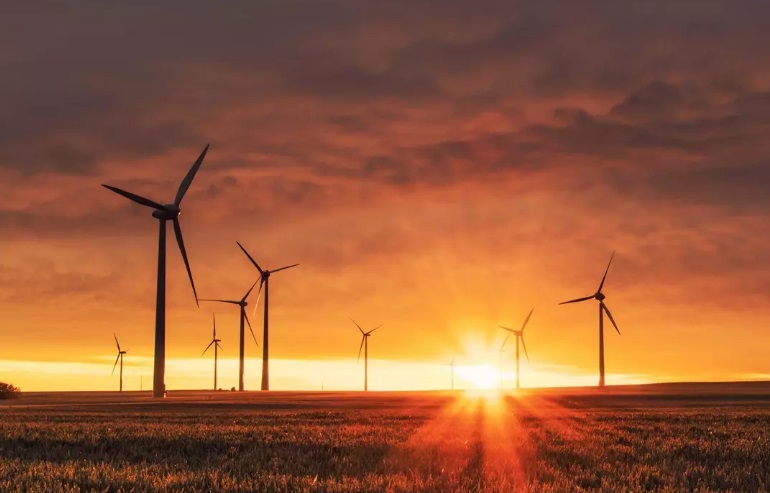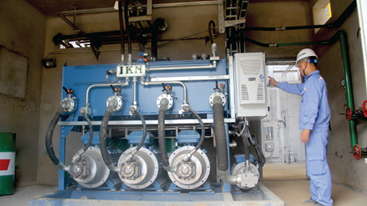Saturday, 27/07/2024 | 07:41 GMT+7

Our energy and climate future increasingly hinges on the decisions made in emerging market and developing economies. These areas currently account for around two-thirds of global carbon emissions – with one-third occurring in China and another third arising from other markets – and would represent the largest source of future emissions growth if insufficient action is taken to transform their energy systems.
Current investment levels are largely insufficient to match the scale and pace needed to finance those transformations. On a global level, capital remains abundant, but the COVID-19 pandemic is exacerbating pre-crisis imbalances in the cost and availability of finance. While global energy capital expenditures are set to decline by 18% in 2020, mounting risks are expected to contribute to a nearly one-quarter decline in energy investment among developing economies, outside of China.
Under any pathway, the future energy system will require significantly more capital. To meet the accelerated emissions reduction goals of the IEA Sustainable Development Scenario, the share of clean energy in total investment would need to rise to around two-thirds by 2030 accompanied by a dramatic scale-up in clean power, grids and demand-side sectors. Nearly 60% of this investment would need to occur in developing economies, where fiscal and monetary policy options are more limited, and with a growing contribution of debt-based financing to accommodate a shift towards more capital-intensive assets.
While the crisis is expected to leave long-lasting scars on the energy system and create new challenges for mobilising investments, emerging regions can opt to “build back better” by creating more inclusive, resilient and sustainable societies. Such a transformation has the potential to realise profound socioeconomic benefits, from lifting millions out of energy poverty to propelling job creation and development.
Progress hinges on better linking sources of sustainable finance with the areas of greatest need, and aligning these sources with the requirements of companies and assets. A growing number of developing economies – successful at mobilising investments for clean energy projects – are testament to the incredible potential and increasing attractiveness of those markets. Countries such as India and Brazil have developed strong track records of attracting investment in renewable power, Indonesia has made great strides towards reaching universal electricity access, while China has moved to the forefront of transport electrification. Such examples provide lessons on the type of policies, financial tools and public-private partnerships that can create the right environment to attract investment more broadly in developing economies.
In this post, we focus on three areas where efforts are needed to accelerate investments in clean energy transitions:
1. Improving regulatory frameworks and policies for clean energy
While more than 70% of clean energy-related investment is likely to come from private sources, governments play a key role in improving project bankability, managing risks and creating an environment for investments to flourish. Countries can enhance investor interest and confidence by adopting long-term, ambitious clean energy strategies, including net zero commitments, as well as levelling the playing field through phasing out fossil-fuel consumption subsidies.
Such plans are most effective when backed by clear and stable policies for accelerating the uptake of renewables and low carbon fuels, improving energy efficiency, and enhancing regulatory frameworks for grid infrastructure and distributed solutions to support system integration and access goals. Coupling these efforts with targeted public finance and remuneration mechanisms that foster competition, such as auctions, helps to stimulate investor appetite.
2. Fostering new and innovative approaches to finance
Heightened macroeconomic risks and the absence of deep capital markets contribute to a higher cost of capital for clean energy projects in developing economies compared with advanced economies. The cross-border nature of investing in clean energy and infrastructure poses additional challenges for investors, as they have to deal with multiple regulations and currencies.
There is an opportunity for energy policies and financing solutions to better work hand in hand to support investments. Public-private partnerships could be better utilised to build, identify, and help replicate innovative financial solutions and refine models of cross-border capital investment flows. The role of development banks and other public financial institutions is vital to support bankable project structures, particularly through their use of blended finance and focus on local capacity building. More widespread use of sustainable and transition finance instruments could further help to signal clean energy investment opportunities, while new sources of funding, including from institutional investors and philanthropic institutions, will play increasingly important roles.
3. Managing transitions in legacy sectors and infrastructure
In order to meet sustainable development goals, developing economies will also need to manage transitions in carbon- and energy-intensive sectors. Using existing energy infrastructure – including fossil fuel-based power and industrial plants – as in the past would lock in emissions for decades to come. Such areas have important socioeconomic and employment implications, particularly at a time of economic stress resulting from the pandemic. A big variable revolves around the roles of state versus private actors; in recent years, state-owned enterprises made over half of investment in developing economies and account for an important part of activity in such legacy sectors.
Policymakers, companies and investors need to consider ways to finance a broad range of solutions, such as carbon capture, clean hydrogen, and the repurposing and retirement of aging and inefficient infrastructure, as well as financial and economic approaches that support a just transition for workers in carbon-intensive sectors.
To sum up, governments, companies and the financial community will all have a role to play in setting the conditions, developing the projects and providing the capital needed to address the investment puzzle in developing economies. In recognition of the opportunity that such a challenge presents, the International Energy Agency, in collaboration with the World Economic Forum and the World Bank, is producing a special report that seeks to provide concrete and practical recommendations to accelerate the financing of clean energy transitions, and spark public, private and international coalitions to address this fundamental issue.
Weforum.org
Click to view the original article.








.jpg?w=367&h=206&mode=crop) Notice for Contracts award for Support to Industrial Enterprises for Energy Audits and Preparation of Feasibility Studies (Package No. C2.2.4)
04/06/2024
Notice for Contracts award for Support to Industrial Enterprises for Energy Audits and Preparation of Feasibility Studies (Package No. C2.2.4)
04/06/2024
 Training Courses for Energy Managers and Energy Auditors
Training Courses for Energy Managers and Energy Auditors
 Vietnam Energy Outlook Report – Pathway to Net Zero
Vietnam Energy Outlook Report – Pathway to Net Zero
 Long Son Cement saves 30% of electricity consumption thanks to heat recovery
Long Son Cement saves 30% of electricity consumption thanks to heat recovery
 Expression of Interest: C2.1.15: Development of Energy-Efficient Technology Catalogs for the Industrial Sector
Expression of Interest: C2.1.15: Development of Energy-Efficient Technology Catalogs for the Industrial Sector
 Optimizing Compressed Air Systems for Southern Industrial Enterprises
Optimizing Compressed Air Systems for Southern Industrial Enterprises
 The Ministry of Industry and Trade Review the Energy Efficiency and Conservation activities in Lao Cai.
The Ministry of Industry and Trade Review the Energy Efficiency and Conservation activities in Lao Cai.
 EOI Extension: C2.2.2: Review and update for current EE benchmarking for 2 sub-industrial sectors
EOI Extension: C2.2.2: Review and update for current EE benchmarking for 2 sub-industrial sectors